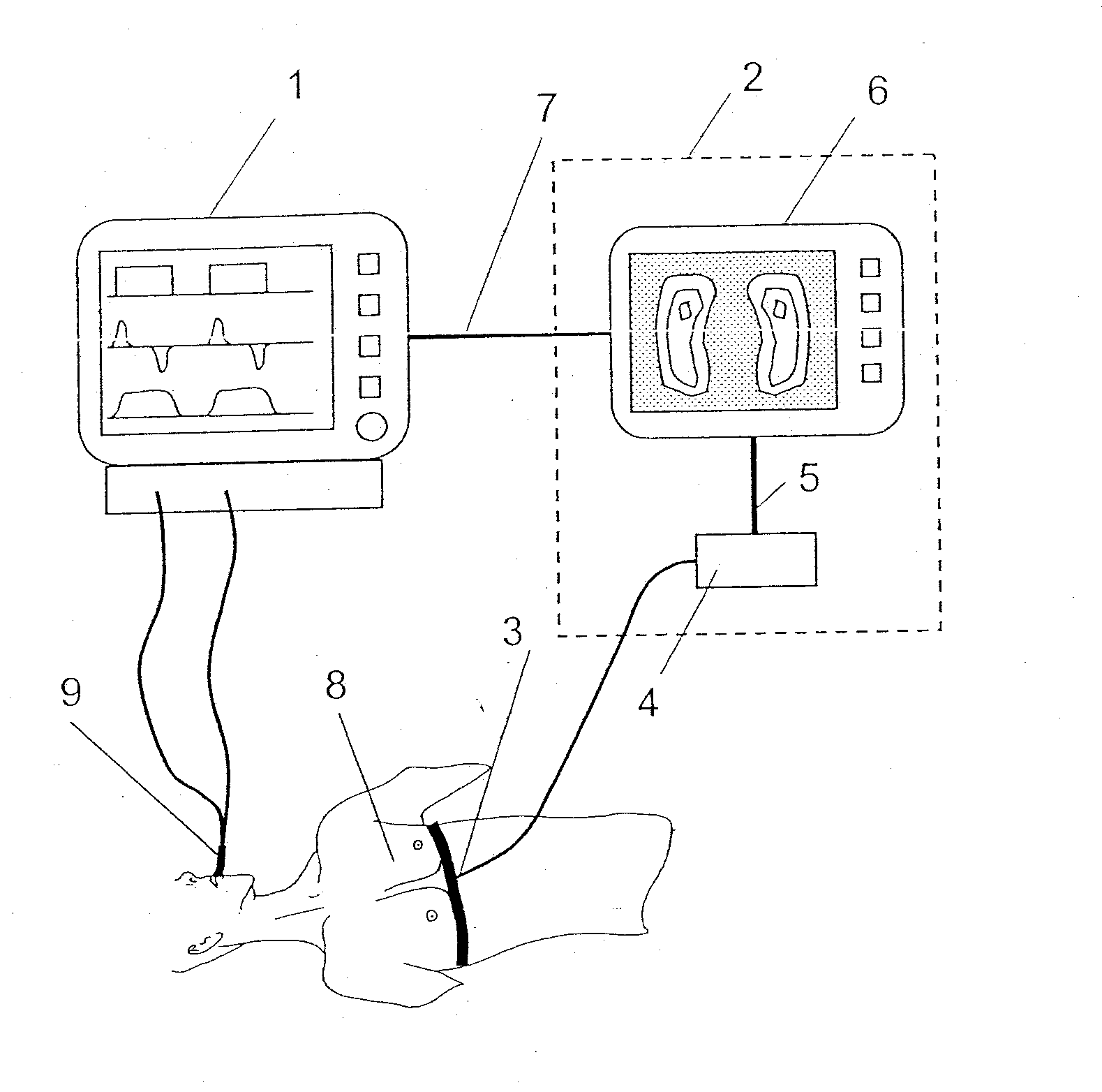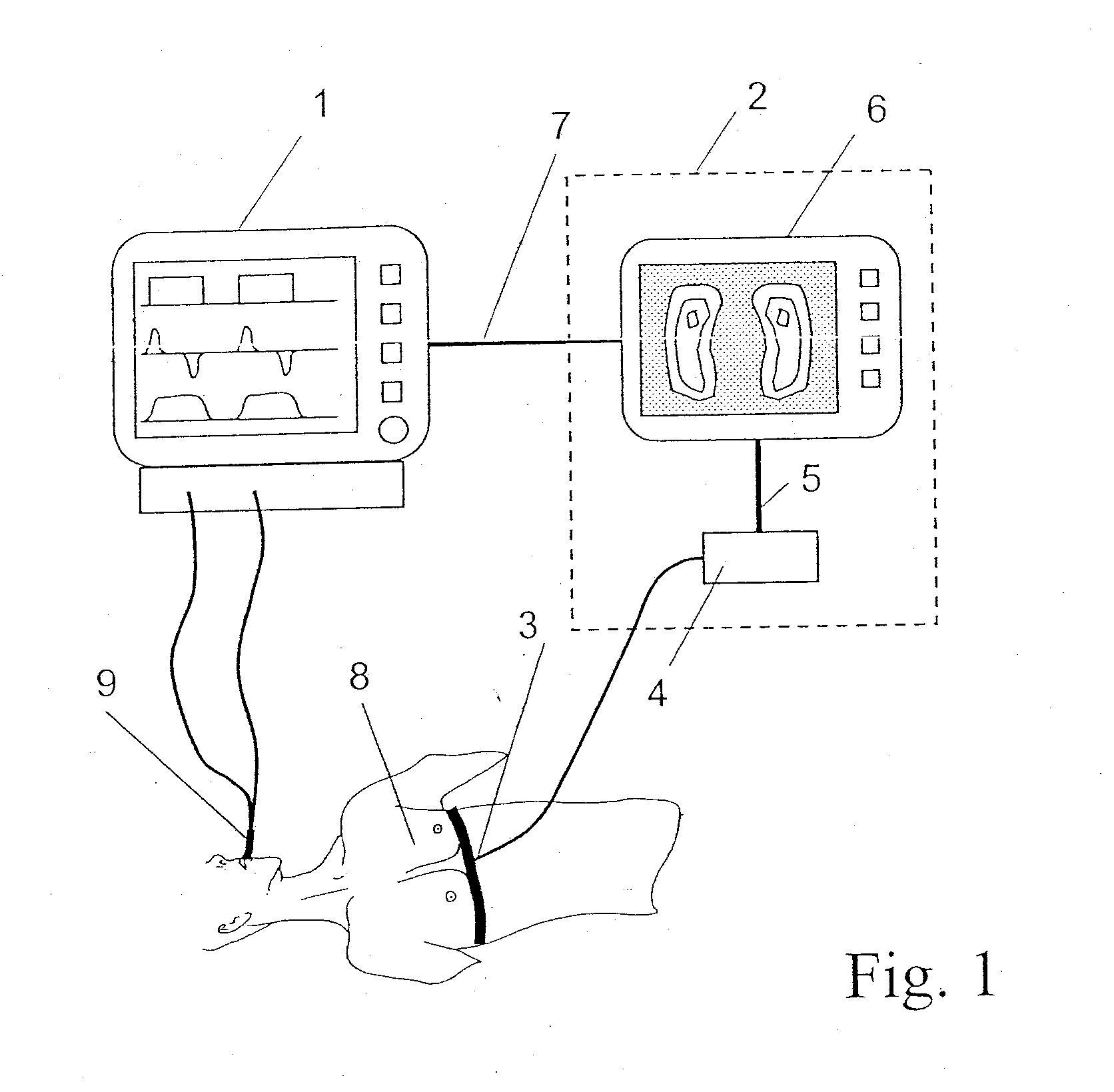Process and device for lung ventilation
a technology of lung ventilation and process, which is applied in the direction of valve operating means/release devices, applications, diagnostic recording/measuring, etc., can solve problems such as hospital complications, and achieve the effect of improving the ventilation of the lungs
- Summary
- Abstract
- Description
- Claims
- Application Information
AI Technical Summary
Benefits of technology
Problems solved by technology
Method used
Image
Examples
Embodiment Construction
[0018]Referring to the drawing in particular, a first image of the lungs, which are not yet compromised by the anesthesia, is determined by means of the EIT system 2 for the patient 8, in the recumbent position, before initiation of anesthesia. The patient 8 will have to undergo, for example, major surgery.
[0019]The EIT system 2 contains, as is shown, an evaluating and display unit 6 and a computing unit 4. The system 2 detects images of the lung status of the patient 8 with the use of an electrode belt 3.
[0020]The computing unit 4 may also be arranged separately outside the EIT system 2, for example, between the evaluating and display unit 6 and the respirator 1. The computing unit 4 is connected to the evaluating and display unit 6 by means of the line 5. Furthermore, a technical alternative is that the EIT system 2 is arranged in an integrated total system together with the computing unit 4 and the respirator 1. While the electrodes remain in the same position as before, a second...
PUM
 Login to View More
Login to View More Abstract
Description
Claims
Application Information
 Login to View More
Login to View More - R&D
- Intellectual Property
- Life Sciences
- Materials
- Tech Scout
- Unparalleled Data Quality
- Higher Quality Content
- 60% Fewer Hallucinations
Browse by: Latest US Patents, China's latest patents, Technical Efficacy Thesaurus, Application Domain, Technology Topic, Popular Technical Reports.
© 2025 PatSnap. All rights reserved.Legal|Privacy policy|Modern Slavery Act Transparency Statement|Sitemap|About US| Contact US: help@patsnap.com


